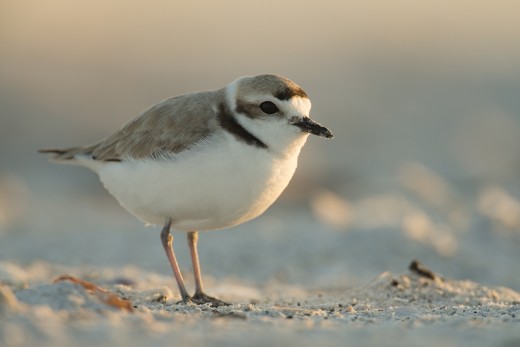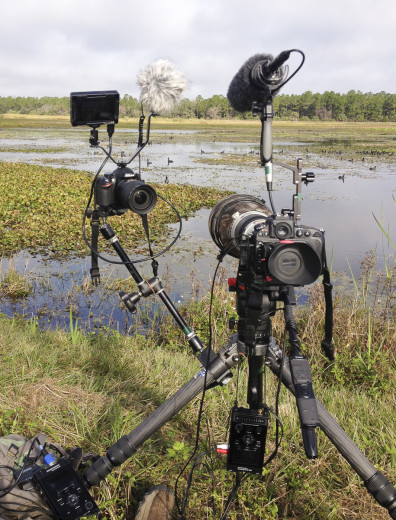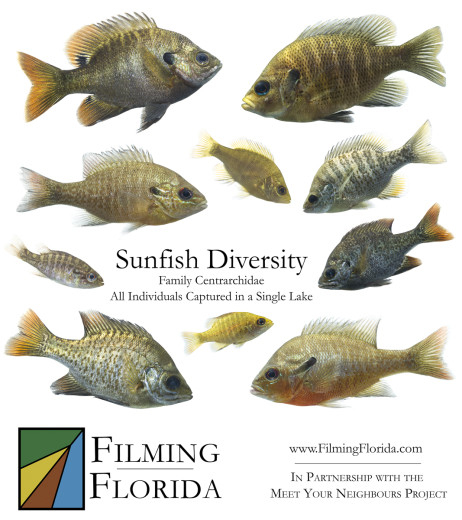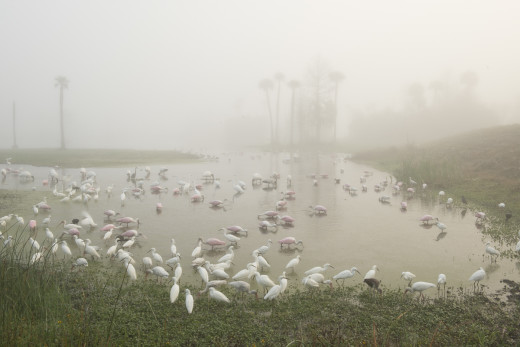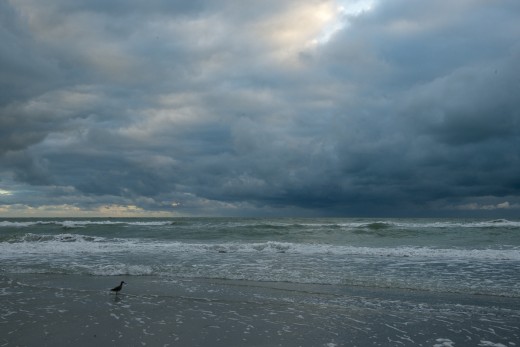
A Willet (Tringa semipalmata) feeds in the surf as a storm dumps rain offshore in the late afternoon.
Back in 2013 when Filming Florida was first conceived, the goal was to produce a one hour documentary about natural Florida. From day one, I have always known that tackling such a big topic with so many facets was going to be a major challenge for a one hour program. Quite simply, there are too many stories that I want to tell making it difficult to tie them all together into a single cohesive story. To avoid creating a disconnected and choppy program, I see two options. First, I can go very broad and not delve too deeply into any particular storyline, allowing me to tell the broader story of Florida without getting bogged down in the details. My second option is basically the opposite and I can narrow my focus and turn my attention to a single storyline, whether that was a single theme, region, or species. For me, neither of these options are satisfactory so I have gone back to the storyboard.
The problem with the first option is quite simply the broad storytelling. Good storytelling (and natural history in general for that matter) isn’t about the broad, general ideas. It is about the details and specifics of the story. It is dialing down into the nitty gritty and discovering the amazing. Simply telling the story of natural Florida in broad generalizations isn’t going to work for me.
On the other hand, I don’t like the idea of limiting myself to a single region, theme, or species. One of the amazing aspects of Florida is its diversity and the ability to compare and contrast different species, habitats, and life histories in different parts of the state. Simply narrowing my focus isn’t going to fulfill my own desires and interests and it sure isn’t going to my storytelling problem.
So, I have decided to reconsider my original assumption, the one hour format. If this is my single greatest constraint then what about changing the format to better serve the story I want to tell? And with that, a one hour piece has become an eight part miniseries. Each of the eight episodes will focus on a group of habitats and the species that live within those ecosystems. I will be able to compare and contrast habitats across the state while still delving deep enough into individual stories to tell a thorough and meaningful narrative. It simply makes the most sense and lets the story shape the format rather than the opposite.
It might sound a bit strange but as soon as I made the decision, I immediately felt at peace and confident in the format. Yes, it becomes a much more ambitious project, but this has always been about the story and this new format is true to the story. There will be a lot of new challenges that will develop with this new format but we will tackle those as they arise.
Check back early next week to learn about how these eight episodes will break down and a brief synopsis of each episode.
